How to Use a Gut Hook Knife Properly for Hunting & Outdoors
If you’ve ever gone hunting, camping, or spent time in the great outdoors, you’ve probably heard of a gut hook knife.
But what is it exactly, and how can it make your outdoor experiences smoother? Whether you’re a seasoned hunter or just curious about these knives, you’re in the right place.
This guide will teach you everything you need to know about using a gut hook knife properly, its benefits, and why it’s a must-have in your outdoor gear collection.
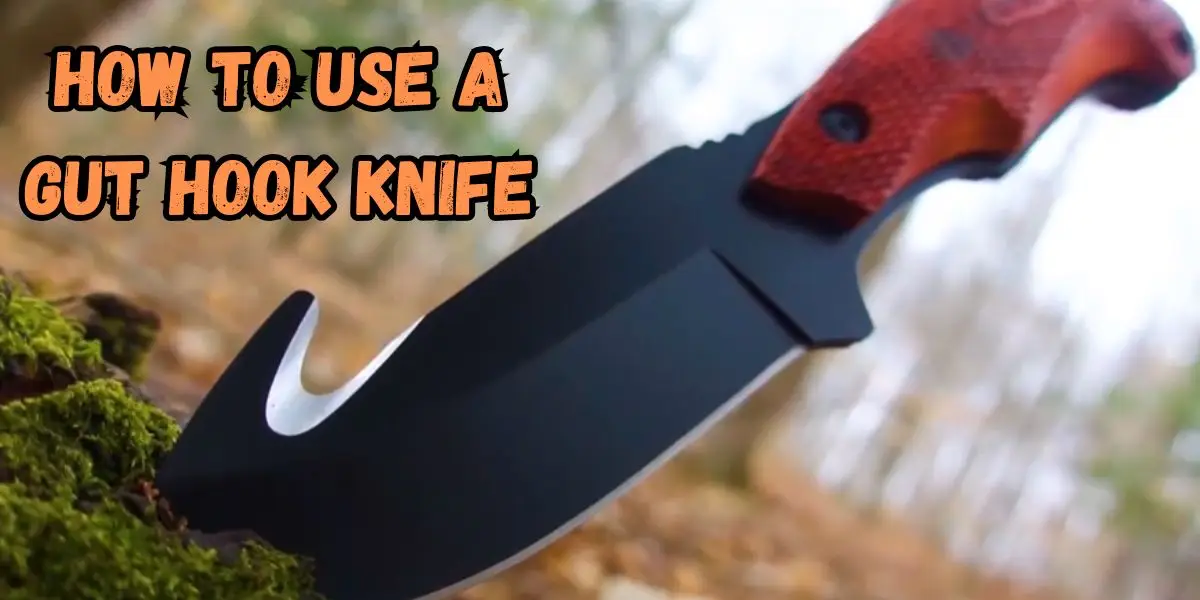
How to Use a Gut Hook Knife
What is a Hook Knife?
A gut hook knife is a specialized tool designed primarily for hunters, anglers, and outdoor enthusiasts who must dress and process game animals. It’s not just any regular knife—it has a unique hook-shaped notch built into the blade’s spine, making it incredibly useful for field dressing.
But why does this little feature matter so much? Simply put, the knife helps you cut through rigid materials—like animal hide and internal organs—without puncturing the guts. This is essential for preserving the quality of the meat and ensuring a quicker, cleaner, and more efficient process.
What Makes a Gut Hook Knife Different?
The knives come in different shapes and sizes, but their distinguishing feature is that sharp, curved notch on the back of the blade. This feature helps the knife perform delicate cuts without excessive force or worrying about damaging the internal organs. You’ll typically find these knives in two primary forms:
- Fixed Blade: As the name suggests, these knives have a solid, non-foldable blade. They are often sturdier and preferred for heavy-duty tasks, making them ideal for larger games like deer or elk.
- Folding: These knives are compact, convenient for carrying in a backpack or pocket, and great for lighter tasks. However, they may not be as robust as fixed blades.
So whether you’re dressing a deer or skinning a minor game, the knife is designed to make those tasks easier and more precise.
You might wonder why I need it now that you know what this knife is. If you’ve ever tried using a standard hunting knife for field dressing, you know how easy it is to make a mistake. Cutting through the abdominal wall without puncturing internal organs can be tricky, and that’s where the knife shines.
The Benefits of Using this Knife
- Precision and Control: The hook ensures you don’t accidentally puncture the intestines or other organs, which can spoil the meat and create a mess.
- Speed and Efficiency: The curved hook allows you to make smooth, controlled cuts, making your work quicker and less tiring.
- Clean Cuts: Whether gutting a deer or a fish or preparing an animal for skinning, the hook provides cleaner cuts than a regular knife.
- Versatility: Besides field dressing, knives can be used for various outdoor activities, from cutting ropes to opening packages, making them a great all-around tool.
Overview
While a hook knife’s primary purpose is hunting and game processing, you’ll find that these knives have a broad range of uses in the wilderness. Whether you’re an avid angler, a fisherman, or an outdoor enthusiast, a gut hook can make your experience much more convenient. Here are some of the most common uses:
- Field Dressing Game: The knives are most commonly used in field dressing games, ensuring clean cuts without damaging the meat.
- Skinning: Once the gut is removed, the knife can also skin the animal with minimal effort.
- Cutting and Slicing: The curved blade makes slicing ropes, twine, or even cutting up food in camp much more straightforward.
- Camping Tool: A gut knife is often included on camping gear lists. It’s ideal for tasks like opening cans or cutting through thorny vegetation.
What Should You Know Before Using this Knife?
Before using your essentials, it’s important to understand a few basic things. These knives are sharp and can cause injury if misused. So, let’s cover some tips on how to handle this tool safely and effectively.
Proper Grip and Handling
Your grip is everything when using any knife, especially one with a hook. Hold the handle firmly with your dominant hand while keeping your other hand safe from the blade. The hook should face away from your body and internal organs during use to avoid accidental cuts.
Safety First
As with any sharp tool, safety is paramount. Always wear gloves when using a hook knife, particularly if cutting through tough hide. This will help protect your hands from slips or accidents. Ensure you work in a stable environment, preferably with the animal on a solid surface or in a position that allows you to work safely.
How to Choose the Right Gut Hook Knife
Choosing the right hook knife is essential for your success in the field. When picking a knife, consider the following factors:
- Blade Material: High-carbon steel or stainless steel are excellent choices, as they retain sharpness and resist rust.
- Blade Length and Shape: A longer blade gives you more control, but a smaller folding knife is an excellent choice for portability.
- Comfort: Make sure the handle is ergonomic and comfortable, especially if using the knife for extended periods.
How to Use a Gut Hook Knife: A Step-by-Step Guide
This knife can make outdoor tasks much easier and safer, particularly field dressing. If you’re new to this tool, don’t worry—this step-by-step guide will walk you through how to use it effectively. Whether skinning a deer, processing fish, or preparing minor games, the gut hook is your go-to tool for precise cuts.
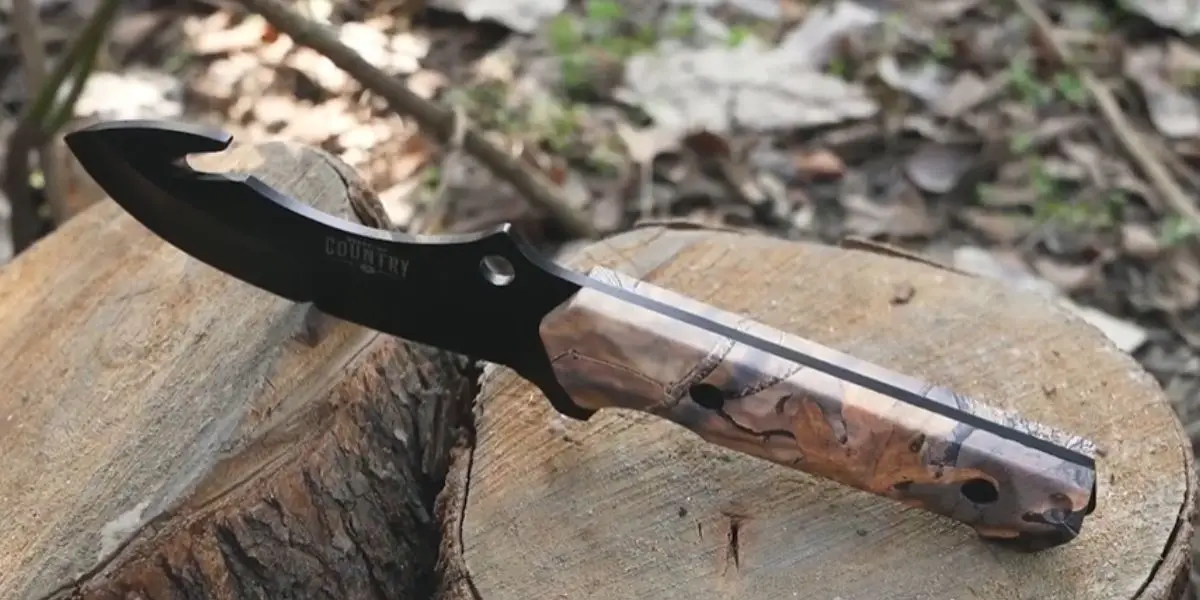
Step 1: Prepare for the Task
Before you even touch the hook knife, preparation is key. This involves gathering all necessary tools, choosing a proper location, and ensuring you’re physically ready for the task. Here’s what you need to do first:
Select the Right hook Knife and Location
- When choosing your knife, Ensure it’s sharp and in good condition. A dull blade can cause accidents and make the task harder.
- Pick a clean, stable surface: If you’re working with a larger game, it’s crucial to have the animal on a flat surface, such as a clean tarp or butcher table.
- Clear your workspace: Remove any unnecessary items from the area to avoid distractions and accidents.
Personal Safety and Comfort
- Wear gloves: Protect your hands from cuts and potential contamination.
- Position yourself properly: Stand comfortably so you don’t strain your back or wrists. A low table or a butcher block is ideal for a larger game.
- Mental preparation: Field dressing can be delicate. Take a moment to calm yourself and ensure that you’re fully focused.
Step 2: How to Hold the Knife
Your grip on the hook knife is critical to maintaining control and safety. Hold the knife securely while allowing right-handed or left-handed movement.
The Proper Grip
- Full grip: Hold the handle with your dominant hand, ensuring your fingers wrap around the handle securely.
- Keep your thumb away from the blade. To avoid accidental cuts, Position your thumb on the knife’s spine. Never place it near the hook itself.
- Keep your non-dominant hand clear: When holding the game with your non-dominant hand, always ensure that it is not in the cutting area.
Test the Grip
Before starting the actual cut, test the knife’s balance and your grip by lightly moving the blade in a controlled manner. This will ensure you feel comfortable and steady, which will help you make precise cuts.
Step 3: Making the First Cut (Opening the Abdomen)
Now comes the part where you use the gut hook knife to make your cuts. This is where the tool’s unique feature shines.
Locate the Starting Point
Position the hook below the sternum or where the abdominal cavity begins. Aim for a spot that does not pierce internal organs, particularly the intestines or bladder.
Begin with a Gentle Cut
- Angle the knife correctly: Hold the knife at a slight downward angle so the hook will open the abdomen without puncturing internal organs.
- Make a shallow incision: Slowly slide the gut hook across the skin of the abdomen. The hook should catch and pull through the hide with little effort. The goal here is to cut just deep enough to get through the abdominal wall without damaging the contents inside.
Progress Carefully
Use light pressure to avoid forcing the blade, which could lead to unwanted punctures. The hook should do the work, and the cut should follow the natural line of the body’s anatomy.
Step 4: Opening the Cavity
Once the initial incision is made, you’ll need to continue opening the abdominal cavity.
Move Down the Abdomen
After the first cut, gently move the gut hook downward along the belly. If you’re processing a larger animal, ensure the cut is long enough to allow room for the next steps (gut removal and skinning).
Work Around the Rib Cage
Be extra careful as you approach the rib cage. The knife will allow you to slide along the ribs without hitting the delicate organs underneath. Avoid pushing too hard to prevent accidental puncturing.
Step 5: Removing the Gut
With the abdominal cavity open, the internal organs must be removed. This step requires precision and care.
Cutting Through the Connective Tissue
Use the gut hook to make cuts around the diaphragm and any connective tissues. These will need to be severed to release the organs, but make sure the intestines are not cut open.
Pulling the Organs
As you work the knife, pull the organs gently and carefully from the body cavity, following the natural curvature of the intestines. The gut hook knife makes this step easier by ensuring the organs don’t get punctured by the blade.
Step 6: Final Cleanup
Once the gutting is complete, there are a few final steps to ensure everything is clean and tidy.
Remove Remaining Bits of Tissue
Use the hook knives to carefully remove any leftover tissue or fat from the cavity, which helps maintain meat quality and cleanliness.
Rinse and Dry the Cavity
If possible, rinse the cavity with clean water to remove debris or residue. Dry it thoroughly to prevent contamination before proceeding to skinning or further processing.
Common Mistakes to Avoid
Even experienced hunters can make mistakes when using a hook knife. To help you avoid these pitfalls, here are some common mistakes and how to steer clear of them:
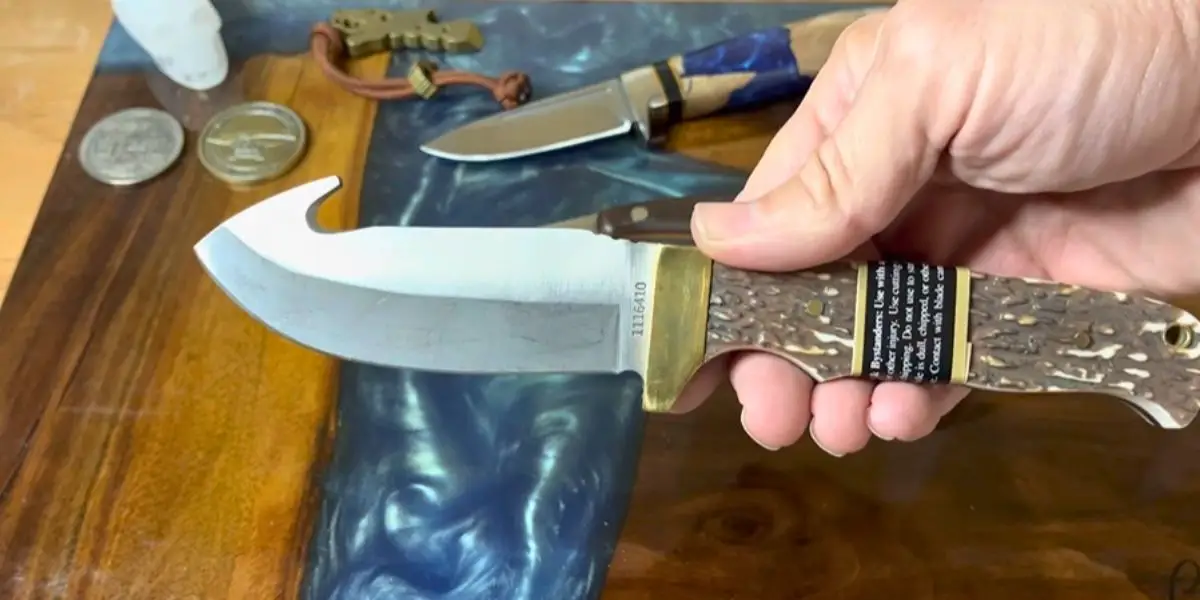
Overcutting or Underestimating Pressure
Applying too much pressure can cause you to puncture internal organs, while using too little can make the cut inefficient. Use just enough force to allow the hook to do the work.
Inaccurate Placement
Placing the gut hook knife too close to sensitive organs like the intestines can cause messy accidents. Make sure to start your cut at a safe distance.
Holding the Knife Incorrectly
A poor grip can lead to a lack of control, which could be dangerous. Always keep your hands safe from the blade, and adjust your grip as needed.
Tips for Efficient and Safe Use
- Use leverage, not force. A hook knife works best by letting the blade’s shape do the work rather than forcing it.
- Maintain a sharp edge: A dull blade increases the risk of injury and makes the task harder. Keep your hook knife sharp for safer and quicker cuts.
- Keep your workspace organized: A cluttered area can lead to accidents. Clean your work surface and keep your tools within easy reach.
- Use a stable surface: Working on a flat, stable surface will prevent the animal from shifting, which can lead to mistakes.
Maintaining, Cleaning, and Storing
Your hook knife is a specialized tool, and like any high-quality blade, it requires some attention to keep it performing at its best. The unique design of the gut hook makes it especially important to keep it sharp and free from debris. This section will cover cleaning, maintaining, and storing your knife so it stays reliable for years.
How to Clean a Gut Hook Knife After Use
After you’ve used your knife, especially during field dressing or hunting, it’s crucial to clean it thoroughly. Failure to do so can lead to bacteria buildup, rusting, or the blade becoming dull over time. Here’s how to do it right:
Initial Cleaning
Wipe off excess debris: Start by wiping away any visible dirt, blood, or other debris with a clean cloth or paper towel. This step is essential because organic matter can stick to the blade and cause corrosion if left to dry.
Wash the Blade
- Use warm, soapy water: If the knife is particularly dirty, fill a bowl with warm, soapy water and use a sponge or cloth to clean the blade. Avoid submerging the entire knife, especially if it has a wooden or textured handle, as prolonged exposure to water can damage these materials.
- Please focus on the hook: The hook knives can trap debris, so clean it thoroughly with a small brush or an old toothbrush. Be gentle around the hook to avoid bending or dulling the edge.
Drying
Dry immediately: After washing, dry the blade and handle immediately with a clean cloth. Don’t let them air dry, as this can lead to rust or water spots. Ensure the hook is completely dry, as water trapped in the grooves can cause it to corrode.
Maintaining the sharpened Gut Hook Knife,
A sharp gut hook knife is essential for effective and safe use. Over time, even with the best care, the blade can become dull, making it harder to perform clean cuts. Here’s how to maintain the sharpness of your knife:
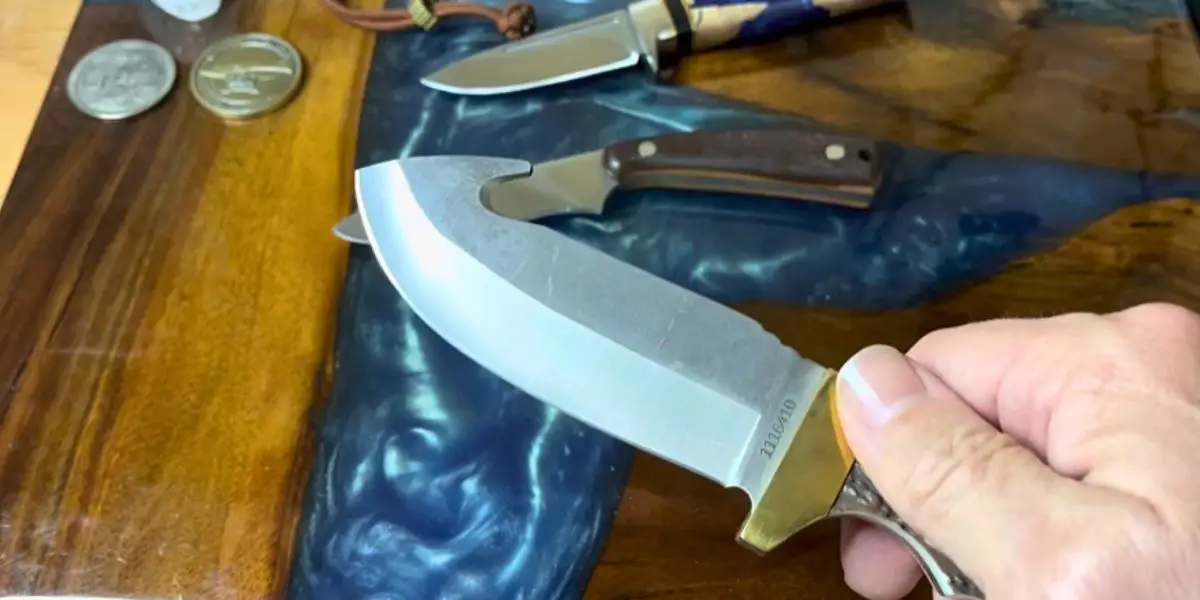
Sharpen Gut Hook Knife
- Use a sharpening stone: A sharpening stone, also called a whetstone, is one of the best tools for sharpening a gut hook knife. Use a fine-grit stone to sharpen the blade at the proper angle (typically 20 degrees for most knives)
- Specialized tools, Such as diamond files or ceramic sharpeners, are also designed for gut hooks. These are handy because they fit neatly into the hook’s curve, allowing you to sharpen the edge without damaging its unique shape.
Maintaining the Edge
- Honing regularly: Honing differs from sharpening in that it doesn’t remove metal but realigns the blade’s edge. Use a regular honing steel or ceramic rod to maintain the knife sharpness between full sharpenings.
- Check for nicks: Inspect the blade for chips or nicks after use. These can be removed with careful sharpening but should be addressed immediately to prevent further damage.
When to Resharpen
- When it feels dull: If your knife feels like pulling instead of slicing, it’s time to sharpen it.
- Test the blade: You can test the knife’s sharpness by gently running it over a piece of paper or making a small cut in a cloth. If it doesn’t glide smoothly through, it’s time to bring out the sharpening tools.
Storing Your Gut Hook Knife
Proper storage is just as important as cleaning and sharpening. Storing your hook knife correctly can prevent damage to the blade and handle. Here’s how to store it safely:
Keep It Dry
Avoid moisture: The last thing you want is for your gut hook knife to rust. Always store it in a dry environment. After cleaning and drying the knife, ensure it’s not exposed to humidity or moisture.
Use a Protective Sheath
- Invest in a sheath: Most gut hook knives have a protective sheath to cover the blade and prevent it from getting damaged or dull. Always store your knife in its sheath when unused, especially if you plan to carry it in a backpack or tool chest.
- Belt sheaths for easy access: A belt sheath is handy if you’re often outdoors. It keeps the knife easily accessible but protected while you move around.
Store in a Safe Place
- Out of reach of children: Like any sharp tool, store your gut hook knife where children or pets cannot access it. Consider a drawer or tool chest that locks.
- Use a knife block or safe: A wooden knife block or a dedicated knife safe are great options for long-term storage. They keep the knife in place and prevent it from being knocked around by other tools.
How to Maintain the Gut Hook’s Special Features
The gut hook requires some specific care since it’s more delicate than the rest of the blade. Here’s how to ensure the hook stays in top condition:
Protect the Hook
- Don’t drop or bang it: The gut hook is typically thinner and more fragile than the main blade, so dropping or banging it can cause it to bend or break. Be gentle when handling the knife.
- Use the hook for its intended purpose: Avoid using the gut hook for tasks it wasn’t designed for, such as cutting through hard materials like bone or wood. This can wear down the hook’s sharpness and shape.
Conclusion
In this guide, we’ve explored everything you need to know about using, maintaining, and storing a gut hook knife. From understanding its unique design to learning the best practices for field dressing and skinning, a hook knife is an invaluable tool for outdoor enthusiasts. Whether new to the knife or a seasoned user, following the proper techniques will ensure you use it safely and efficiently. Proper maintenance, including regular cleaning, sharpening, and safe storage, will extend the life of your knife and keep it in top condition for years of use.
Remember, the key to mastering any tool is practice and care. So, next time you head out for a hunt, you can confidently rely on your gut hook knife to help with precise cuts and smooth field dressing. With the proper knowledge and attention, your knife will be ready for any outdoor challenge that comes your way.
Frequently Asked Questions (FAQs)
A hook knife is primarily used for field dressing animals. It makes precise cuts to open the skin without damaging internal organs.
Hold the handle firmly with the gut hook facing upward. Maintain control and avoid overpressure to ensure a clean, safe cut.
Insert the hook’s tip into the skin, pulling gently in a straight motion. This technique helps avoid puncturing internal organs while skinning.
Yes, but beginners should practice proper handling techniques. Always use slow, controlled movements for safe and effective use and ensure the blade is sharp.
Use a small round file or a specially designed sharpening tool. Work gently along the hook’s curve to maintain its sharpness without altering its shape.
It can also be used for rope cutting, slicing, and other general outdoor tasks, though its design is optimised for field dressing.
After each use, dry the knife thoroughly and store it in a dry place. Sharpen and oil the blade regularly to prevent rust and dullness.
Related Posts
-
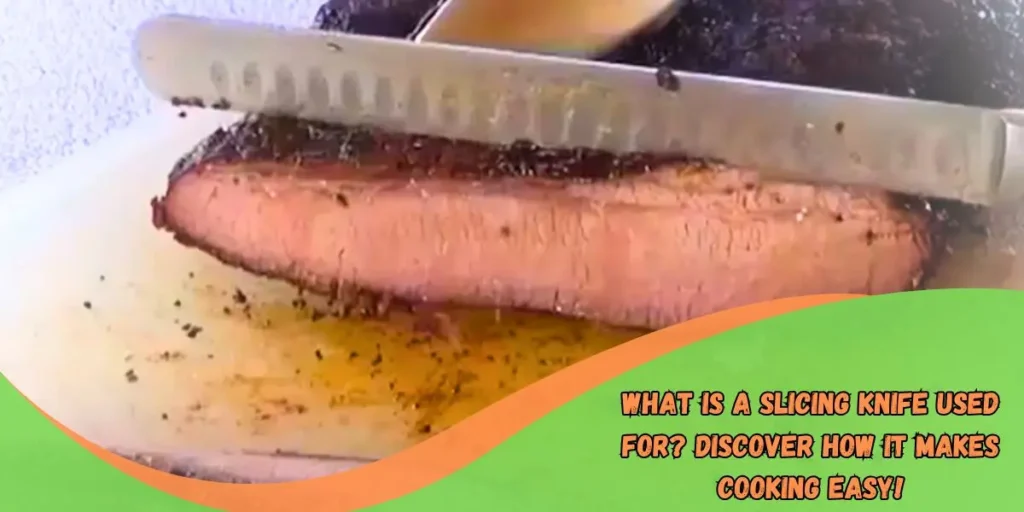 What Is a Slicing Knife Used For? Discover How It Makes Cooking Easy!
What Is a Slicing Knife Used For? Discover How It Makes Cooking Easy! -
 What knives does Gordon Ramsay use? Check out his premium knives
What knives does Gordon Ramsay use? Check out his premium knives -
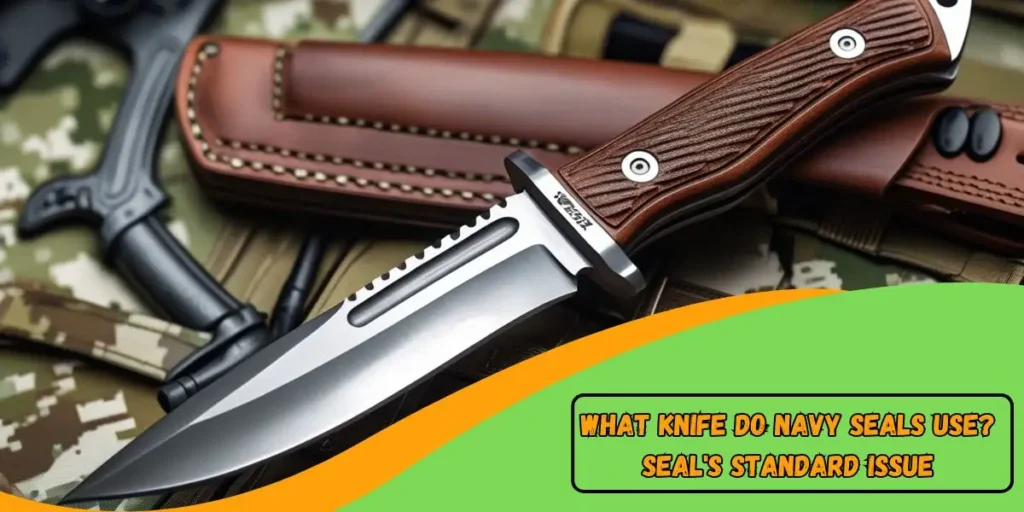 What Knife Do Navy Seals Use? SEAL's Standard Issue 2025
What Knife Do Navy Seals Use? SEAL's Standard Issue 2025 -
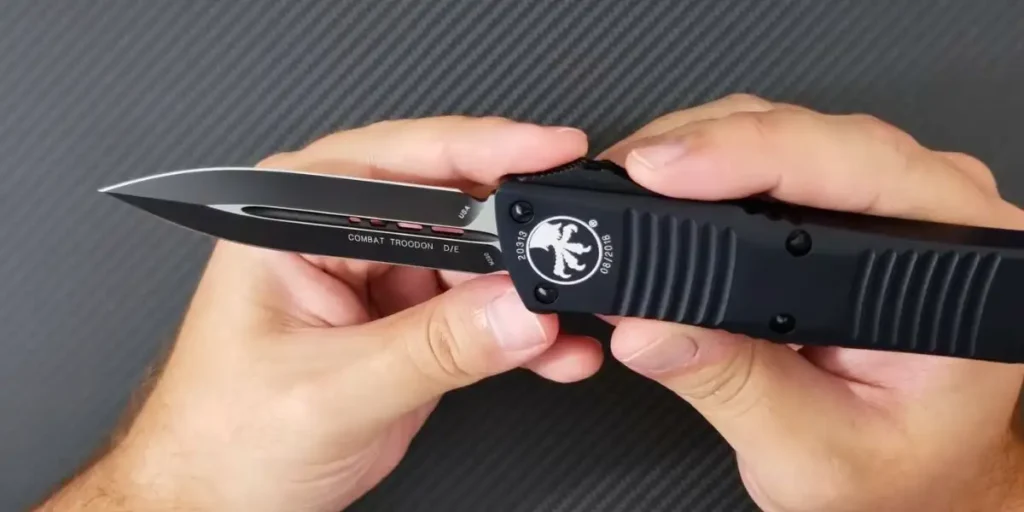 What Knife Does John Wick Use? Learn About His Deadly Blade
What Knife Does John Wick Use? Learn About His Deadly Blade -
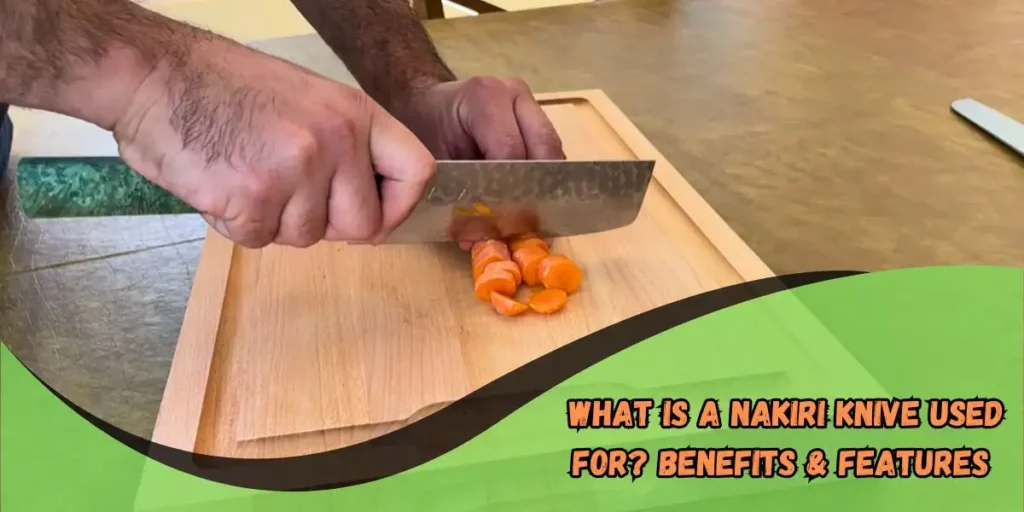 What is a Nakiri Knives Used For? Benefits & Features Explained
What is a Nakiri Knives Used For? Benefits & Features Explained -
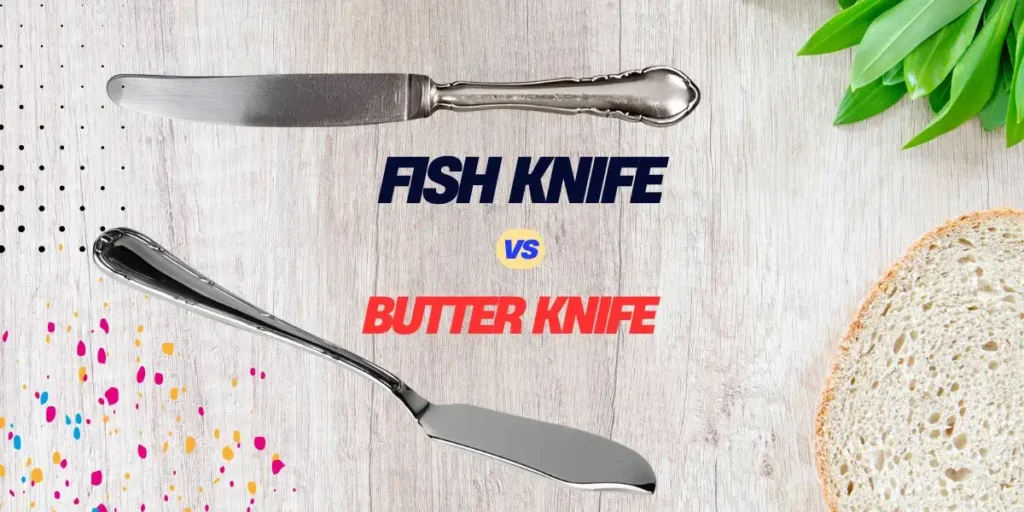 Fish Knife vs Butter Knife: Key Differences and Uses Explained
Fish Knife vs Butter Knife: Key Differences and Uses Explained -
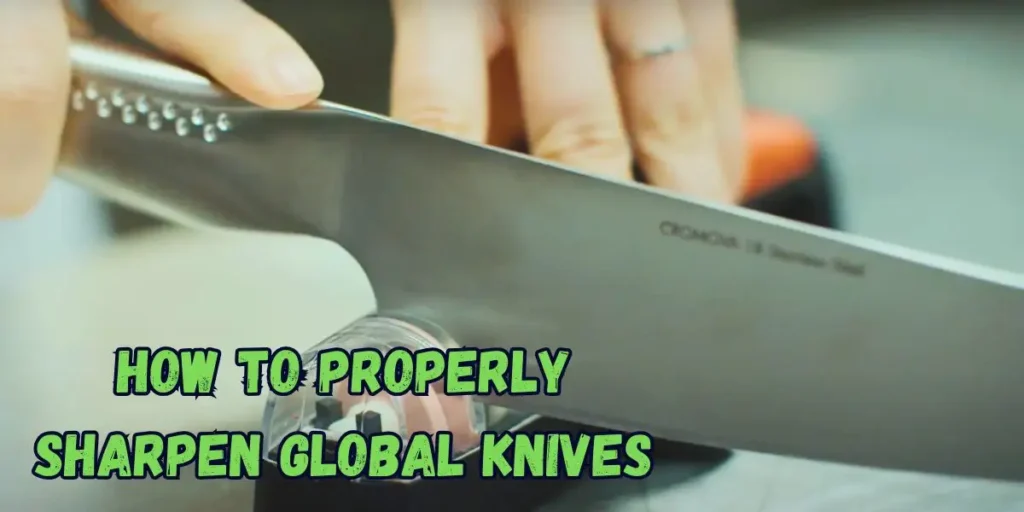 How to Sharpen Global Knife: A Quick Guide 2025
How to Sharpen Global Knife: A Quick Guide 2025 -
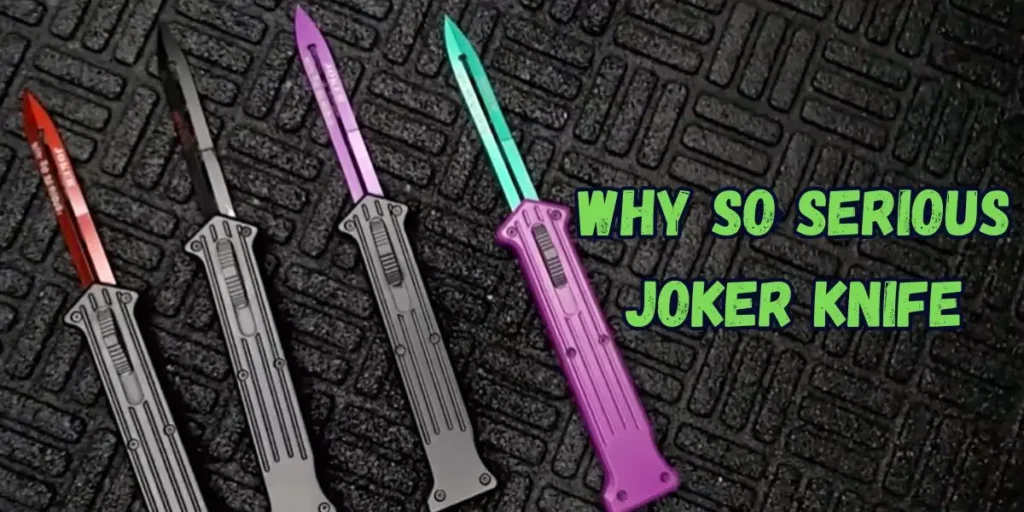 Decoding the Iconic Why So Serious Joker Knife
Decoding the Iconic Why So Serious Joker Knife -
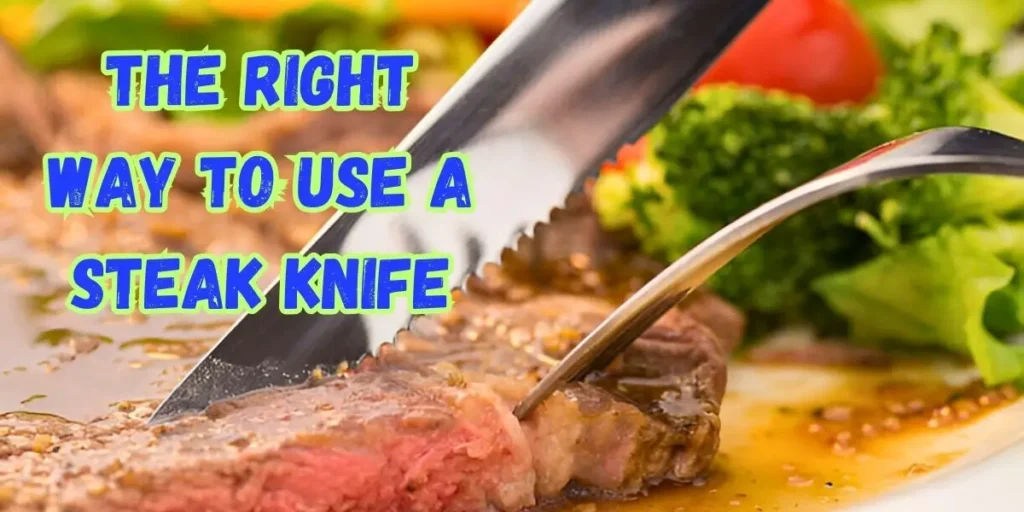 The Right Way to Use a Steak Knife: Tips and Tricks
The Right Way to Use a Steak Knife: Tips and Tricks -
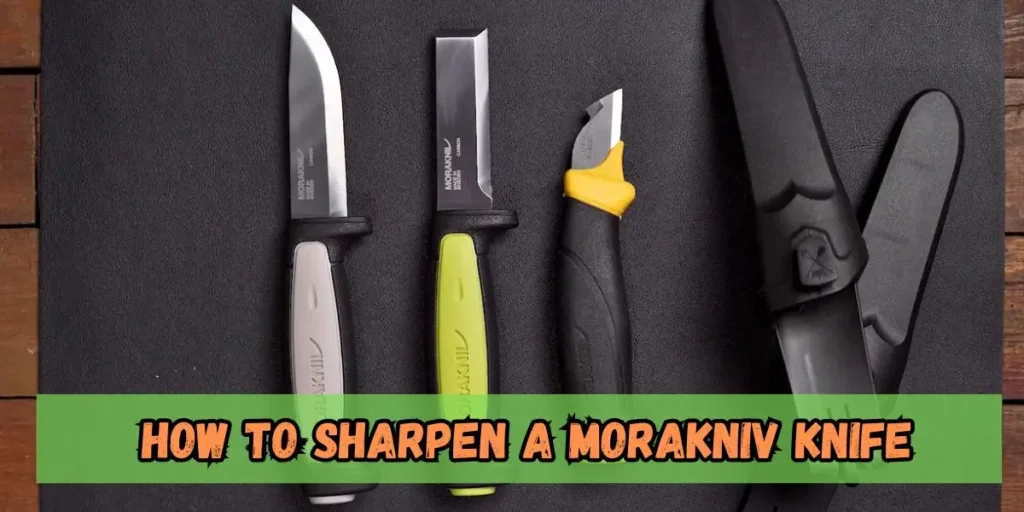 How to Sharpen a Morakniv Knife Safely and Effectively
How to Sharpen a Morakniv Knife Safely and Effectively

